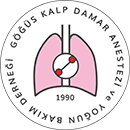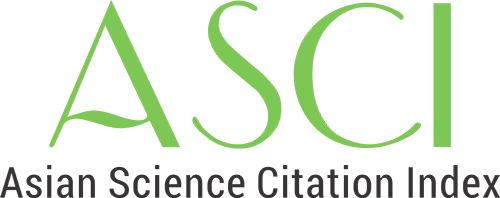

Torakotomi Sonrası Ağrı Tedavisinde Tramadol ve Deksmedetomidinin Kombinasyonu
Abdullah Demirhan1, Rauf Gül2, Süleyman Ganidağlı2, Senem Koruk2, Ayşe Mızrak2, Maruf Şanlı3, Ünsal Öner21Abant İzzet Baysal Üniversitesi Tıp Fakültesi, Anesteziyoloji Ve Reanimasyon Ana Bilim Dalı, Bolu2Gaziantep Üniversitesi Tıp Fakültesi, Anestezi Ve Reanimasyon Ana Bilim Dalı, Gaziantep
3Gaziantep Üniversitesi Tıp Fakültesi, Göğüs Cerrahisi Ana Bilim Dalı, Gaziantep
AMAÇ: Bu çalışmada torakotomi sonrası ağrı tedavisinde tramadole adjuvan olarak deksmedetomidin eklenmesinin solunum fonksiyonlarına, analjezi ve sedasyon üzerine etkisinin araştırılması amaçlandı.
YÖNTEMLER: Torakotomi yapılan 30 hasta randomize olarak iki gruba ayrıldı. Postoperatif hastaların ortalama kan basıncı (OAB), kalp hızı (KAH), solunum sayısı (SS) ve SpO2 değerleri kaydedildi. Grup Tdeki hastalara hasta kontrollü analjezi (HKA) ile 100 mL normal salin içinde 4 mg mL tramadol solüsyonu iv olarak HKA ayarları, 0,3 mg kg-1 sa-1 infüzyon, 10 mg ara bolus doz ve 20 dk kilitleme süresi olacak şekilde infüze edilmeye başlandı. Grup Ddeye ise aynı doz tramadol ile HKA işlemine ek olarak deksmedetomidin 1,0 µg kg-1 dan 20 dk yükleme, 0,4 µg kg-1 sa-1 idame olacak şekilde 24 saat boyunca iv uygulandı. Analjezik etkinliği Visual analog skala (VAS) ile, sedasyon düzeyleri Ramsay sedasyon skalası ile değerlendirildi. Postoperatif dönemde arterial kan gazı (AKG), total tramadol tüketimi ve yan etkiler, zorlu vital kapasite (FVC), 1. saniye zorlu ekspiratuar volüm (FEV1), FEV1/FVC oranı ve vital kapasite (VC) değerleri bakıldı ve gruplar karşılaştırıldı.
BULGULAR: Gruplar dermografik olarak birbirine benzerdi Her iki gruptada etkin analjezi sağlandı. KAH, OAB, VAS, Ramsay sedasyon skalası ve tramadol tüketimi Grup D de Grup T ye göre daha düşük bulundu FEV1, FVC, VC değerlerinde her iki grup arasında istatistiksel olarak anlamlı fark bulunmadı.
SONUÇ: Torakotomi sonrasında postoperatif analjezi sağlamak amacıyla HKA yöntemi ile uygulanan tramadole deksmedetomidin ilavesinin hastalarda solunumu baskılamadan, etkin sedasyon ve analjezi sağladığı, tramadol tüketimini anlamlı düzeyde azalttığı kanısına varıldı.
Combination of Dexmedetomidine and Tramadol In Treatment of Pain After Thoracotomy
Abdullah Demirhan1, Rauf Gül2, Süleyman Ganidağlı2, Senem Koruk2, Ayşe Mızrak2, Maruf Şanlı3, Ünsal Öner21Department Of Anesthesiology And Reanimation, Abant İzzet Baysal University Medical School, Bolu, Turkey2Department Of Anesthesiology And Reanimation, Gaziantep University Medical School, Gaziantep
3Thoracic Surgery Department, Gaziantep University Medical School, Gaziantep
OBJECTIVE: In this study, we aimed to investigate the effects of dexmedetomidine which was used as an adjuvant to tramadol, on respiratory functions, analgesia and sedation in the treatment of the pain after thoracotomy.
METHODS: 30 patients with thoracotomy were divided randomly into two groups. The postoperative vital values were recorded including mean blood pressure(MAP), heart rate(HR), respiratory rate(RR) and SpO2. Group T received patient-controlled analgesia (PCA) with 4 mg mL-1 tramadol iv in 100 ml normal saline solution. PCA settings were 0.3 mg kg-1 h-1 infusion, a bolus dose of 10 mg and 20 minute lockout interval. Group D received tramodol similar to group T, and dexmedetomidine 1.0 µg kg-1 20 minute as loading dose than 0.4 µg kg-1 h-1 iv. for maintanence over 24 hours. Analgesic efficacy was measured with Visual analog scale (VAS), sedation levels were assessed with Ramsay sedation scale. In the postoperative period, arterial blood gas, the total consumption of tramadol and its side effects, forced vital capacity (FVC),1 second forced expiratory volume (FEV1), FEV1/FVC, and forced vital capacity (VC) values were recorded, than groups were compared.
RESULTS: Patients were similar in both groups. In all groups, effective analgesia was achieved. HR, MAP, VAS, Ramsay sedation scale, and tramadol consumption was lower in Group D. In FEV1, FVC, VC values, there were not statistically significant differences between both groups.
CONCLUSION: It was concluded that using PCA in order to provide postoperative analgesia after thoracotomy, with the addition of dexmedetomidine to tramadol provides effective sedation and analgesia without respiration depression.
Makale Dili: Türkçe
(2563 kere indirildi)

















